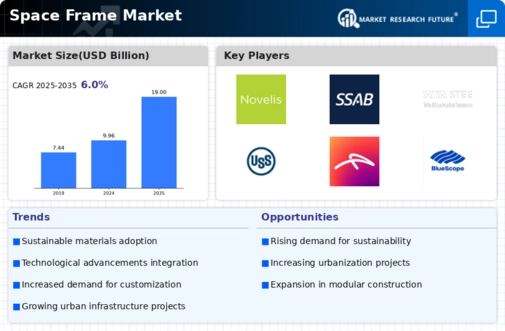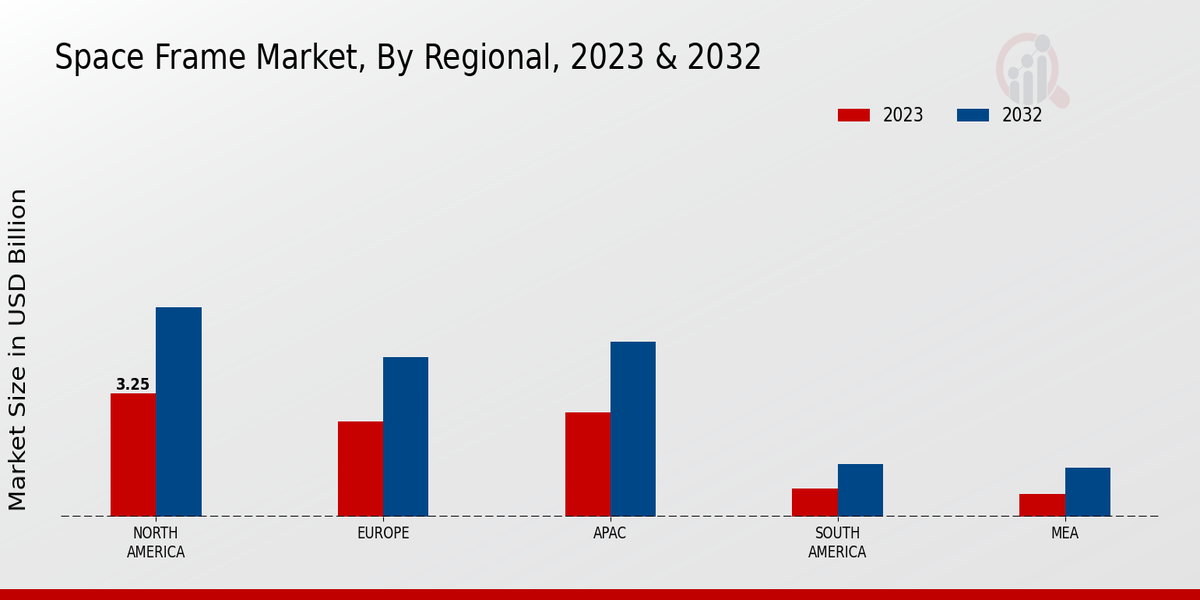Market Growth Projections
The Global Space Frame Market Industry is projected to experience substantial growth over the next decade. With a market value anticipated to reach 9.96 USD Billion in 2024 and further expand to 19.0 USD Billion by 2035, the industry is poised for a promising future. The compound annual growth rate (CAGR) of 6.03% from 2025 to 2035 indicates a robust upward trajectory, driven by various factors such as technological advancements, sustainability initiatives, and urbanization trends. This growth reflects the increasing adoption of space frame structures across diverse applications, highlighting their versatility and efficiency.
Advancements in Construction Technology
Technological advancements play a crucial role in shaping the Global Space Frame Market Industry. Innovations in design software and fabrication techniques enable architects and engineers to create complex geometries with greater precision and efficiency. The integration of Building Information Modeling (BIM) facilitates better project management and collaboration among stakeholders. These advancements not only streamline the construction process but also enhance the overall quality of space frame structures. As the industry embraces these technologies, the market is expected to witness a compound annual growth rate (CAGR) of 6.03% from 2025 to 2035, indicating a robust growth trajectory.
Growing Demand for Lightweight Structures
The Global Space Frame Market Industry experiences a notable increase in demand for lightweight structures across various sectors, including construction and aerospace. This trend is driven by the need for materials that enhance energy efficiency and reduce transportation costs. Lightweight space frames, constructed from materials such as aluminum and composite materials, are increasingly favored for their strength-to-weight ratio. As a result, the market is projected to reach 9.96 USD Billion in 2024, reflecting a growing preference for innovative structural solutions that optimize performance while minimizing material usage.
Increased Investment in Commercial Spaces
The Global Space Frame Market Industry is witnessing increased investment in commercial spaces, driven by the need for modern and aesthetically pleasing structures. Businesses are seeking innovative designs that not only serve functional purposes but also enhance brand identity. Space frames provide the flexibility to create unique architectural forms that attract customers and improve user experience. This trend is particularly evident in retail and hospitality sectors, where the design of physical spaces plays a crucial role in consumer engagement. As investments in commercial real estate continue to rise, the demand for space frame solutions is expected to grow correspondingly.
Sustainability Initiatives in Construction
Sustainability initiatives are increasingly influencing the Global Space Frame Market Industry, as stakeholders prioritize eco-friendly building practices. Space frames, due to their efficient use of materials and ability to create large spans without excessive support, align well with sustainable construction goals. Governments and organizations worldwide are implementing regulations that encourage the use of sustainable materials and construction methods. This shift towards sustainability not only reduces the environmental impact of construction projects but also enhances the appeal of space frame solutions. As a result, the market is projected to grow significantly, potentially reaching 19.0 USD Billion by 2035.
Urbanization and Infrastructure Development
Rapid urbanization and infrastructure development are key drivers of the Global Space Frame Market Industry. As cities expand, there is an increasing need for innovative architectural solutions that can accommodate growing populations and urban demands. Space frames offer versatile design options for large public spaces, sports facilities, and commercial buildings, making them ideal for urban environments. The demand for such structures is likely to rise as governments invest in infrastructure projects to support urban growth. This trend contributes to the overall market expansion, as space frames become integral to modern urban architecture.
























Leave a Comment